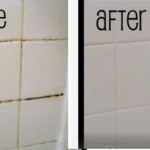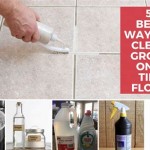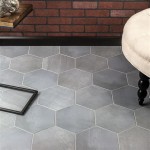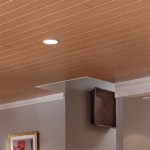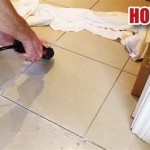What Board Can You Tile On Top Of?
Tiling is a popular method for enhancing the aesthetic appeal and functionality of various surfaces. However, successfully installing tiles necessitates a proper substrate – the surface onto which the tiles are affixed. Choosing the right board to tile on top of is crucial for ensuring the longevity, stability, and overall quality of the tiled surface. Several types of boards are suitable for tiling, each possessing distinct characteristics that make them ideal for specific applications. Understanding these characteristics is essential for making an informed decision.
Before delving into specific board types, it is helpful to consider some general requisites for tiling substrates. The board must be structurally sound, able to bear the weight of the tiles and any anticipated traffic. It needs to be dimensionally stable, meaning it will not significantly expand or contract with changes in temperature or humidity, as this can lead to cracking or loosening of the tiles. The surface should be clean, level, and free of any loose debris or coatings that could interfere with the adhesion of the tile adhesive. Furthermore, the board should be resistant to moisture, particularly in environments such as bathrooms and kitchens.
Failure to select an appropriate board can result in a variety of problems. Tiles may crack, become dislodged, or sound hollow. The grout can crumble, and water infiltration can lead to further damage, including mold growth and structural deterioration. Consequently, careful consideration should be given to the board material before beginning any tiling project.
Cement Board: A Durable and Water-Resistant Option
Cement board, often referred to as concrete backer board, is a widely used substrate for tiling projects, particularly in wet areas. It is composed of cement, reinforced with fiberglass mesh, creating a durable, water-resistant, and fire-resistant material. Cement board is highly stable and resistant to deterioration, making it an excellent choice for bathrooms, showers, and kitchen backsplashes. Its robust construction can withstand significant weight and impact, providing a solid base for tile installations.
The installation of cement board typically involves cutting the boards to size with a utility knife or saw, adhering them to the framing studs with thin-set mortar, and securing them with screws specifically designed for cement board. The joints between the boards are then taped and mudded with thin-set mortar to create a seamless surface. This process is essential for preventing water infiltration and ensuring the integrity of the substrate.
One of the key advantages of cement board is its minimal expansion and contraction when exposed to moisture. This characteristic helps to prevent cracking and loosening of the tiles, ensuring a longer-lasting and more aesthetically pleasing result. Furthermore, cement board provides an excellent bonding surface for tile adhesives, promoting a strong and durable connection between the tiles and the substrate.
While cement board is generally more expensive than some other board options, its superior performance and longevity make it a worthwhile investment for many tiling projects. It is available in various thicknesses, allowing for customization based on specific project requirements and the type of tile being used.
Plywood: A Common but Potentially Problematic Choice
Plywood is a wood-based panel product made by gluing together multiple layers of wood veneer. While plywood is commonly used in construction, its suitability as a tiling substrate is debated. Under the right circumstances, and with the proper preparation, plywood can be used, but it requires careful consideration and adherence to best practices.
The primary concern with using plywood as a tiling substrate is its susceptibility to moisture damage. Plywood can expand and contract significantly when exposed to changes in humidity, potentially leading to cracking or loosening of the tiles. Furthermore, plywood can rot and decay if exposed to prolonged moisture, compromising the stability of the tiled surface. Therefore, plywood should only be used in dry areas and should be protected from moisture as much as possible.
If plywood is used, it is essential to select a high-quality, exterior-grade plywood that is at least ¾ inch thick. The plywood should be securely fastened to the framing studs with screws, and the joints between the sheets should be filled with a moisture-resistant sealant. A waterproof membrane should be applied over the plywood before tiling to provide an additional layer of protection against moisture infiltration.
However, even with these precautions, using plywood as a tiling substrate carries a higher risk compared to using cement board or other water-resistant materials. For wet areas such as bathrooms and showers, cement board is generally the preferred choice. Plywood might be considered for dry areas like kitchen backsplashes, but only if proper moisture protection measures are taken. It is crucial to consult with a qualified tiling professional before using plywood as a tiling substrate to ensure that it is appropriate for the specific application.
Gypsum Board (Drywall): Generally Unsuitable for Tiling
Gypsum board, commonly known as drywall, is a widely used interior wall and ceiling material. It is made from gypsum plaster pressed between two sheets of paper. While drywall is relatively inexpensive and easy to install, it is generally not suitable as a tiling substrate, particularly in wet areas. Drywall is highly absorbent and prone to moisture damage, making it a poor choice for environments where it will be exposed to water or high humidity.
When drywall gets wet, it can become soft and crumbly, losing its structural integrity. This can lead to cracking, loosening, and even complete failure of the tiled surface. Mold and mildew can also grow on wet drywall, posing health risks and further compromising the structural integrity of the wall. For these reasons, tiling directly onto standard drywall in wet areas is strongly discouraged.
There are moisture-resistant versions of drywall, often referred to as "green board" or "blue board." These types of drywall are designed to be more resistant to moisture than standard drywall, but they are still not waterproof. While they may be suitable for some areas with incidental moisture exposure, they are generally not recommended for showers or tub surrounds. Even moisture-resistant drywall can be damaged by prolonged exposure to water, leading to the same problems as standard drywall.
For tiling projects in wet areas, cement board is the preferred substrate. It provides a much more durable and water-resistant surface, ensuring the longevity and stability of the tiled installation. In dry areas, where moisture exposure is minimal, moisture-resistant drywall might be considered, but only with proper precautions and careful attention to detail. It is always best to consult with a tiling professional to determine the most appropriate substrate for the specific application.
In summary, selecting the appropriate board for tiling is paramount for achieving a successful and long-lasting installation. Cement board is the most reliable option for wet areas due to its water resistance and durability. Plywood can be used in limited dry applications with proper precautions. Gypsum board, especially standard drywall, is generally unsuitable for tiling, particularly in areas prone to moisture. Careful consideration of the environment, the type of tile being used, and the long-term performance requirements will guide the selection of the optimal substrate.

Tiled Floors And Walls Skirting Boards Or Not Best Solution Wall Panels World Ltd

Easily Install Cement Board To Prep For Tile Installation

Tile A Table Top With Ceramic

Necessity The Mother Of Invention Using Left Over Tile To Create A Counter Top Cutting Board Hot Plate On Upcycle

How To Install Cement Board For Tile Projects Diy Family Handyman

Step By Guide How To Install Mosaic Tile What Bb Built

How To Tile A Roof With Concrete Tiles Do It The Easy Way Fixmyroof

Tile A Table Top 5 Steps Instructables

Installing Porcelain Tile In The Laundry Room Young House Love

What Types Of Surfaces Can You Tile On Cirillo Lighting And Ceramics
Related Posts

